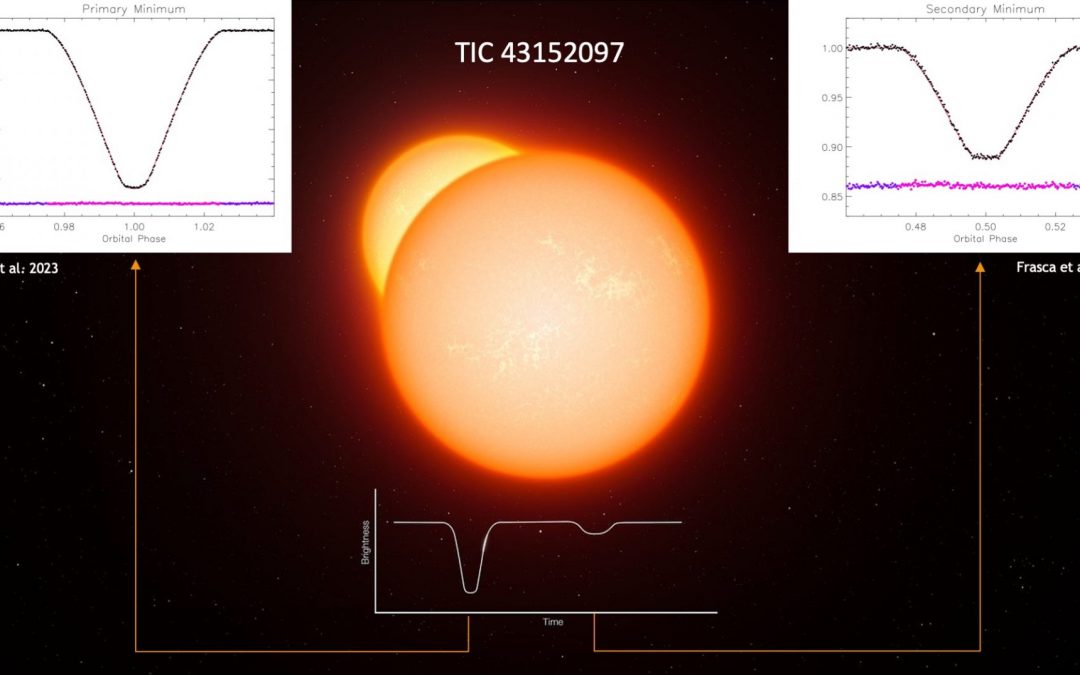By combining the photometry of the TESS space telescope with the high-resolution spectroscopy of HARPS-N (TNG), a team of researchers, led by Antonio Frasca of the Osservatorio Astrofisico di Catania, has discovered a low-mass eclipsing binary system, the first in the young star cluster NGC 2232.
By analysing the data collected by the two instruments, the researchers were able to determine, with extreme precision, the temperature, mass and radius of the two stars that populate the binary system.
The results show that one of the two stars (the less massive one) is 7-11% larger than predicted by classical models. This phenomenon (radius inflation) may be due to the effects of magnetic fields and stellar activity.
Read more in Astronomy & Astrophysics: TIC 43152097. The first eclipsing binary in NGC 2232, by A. Frasca, J. Alonso-Santiago, G. Catanzaro, et al.
